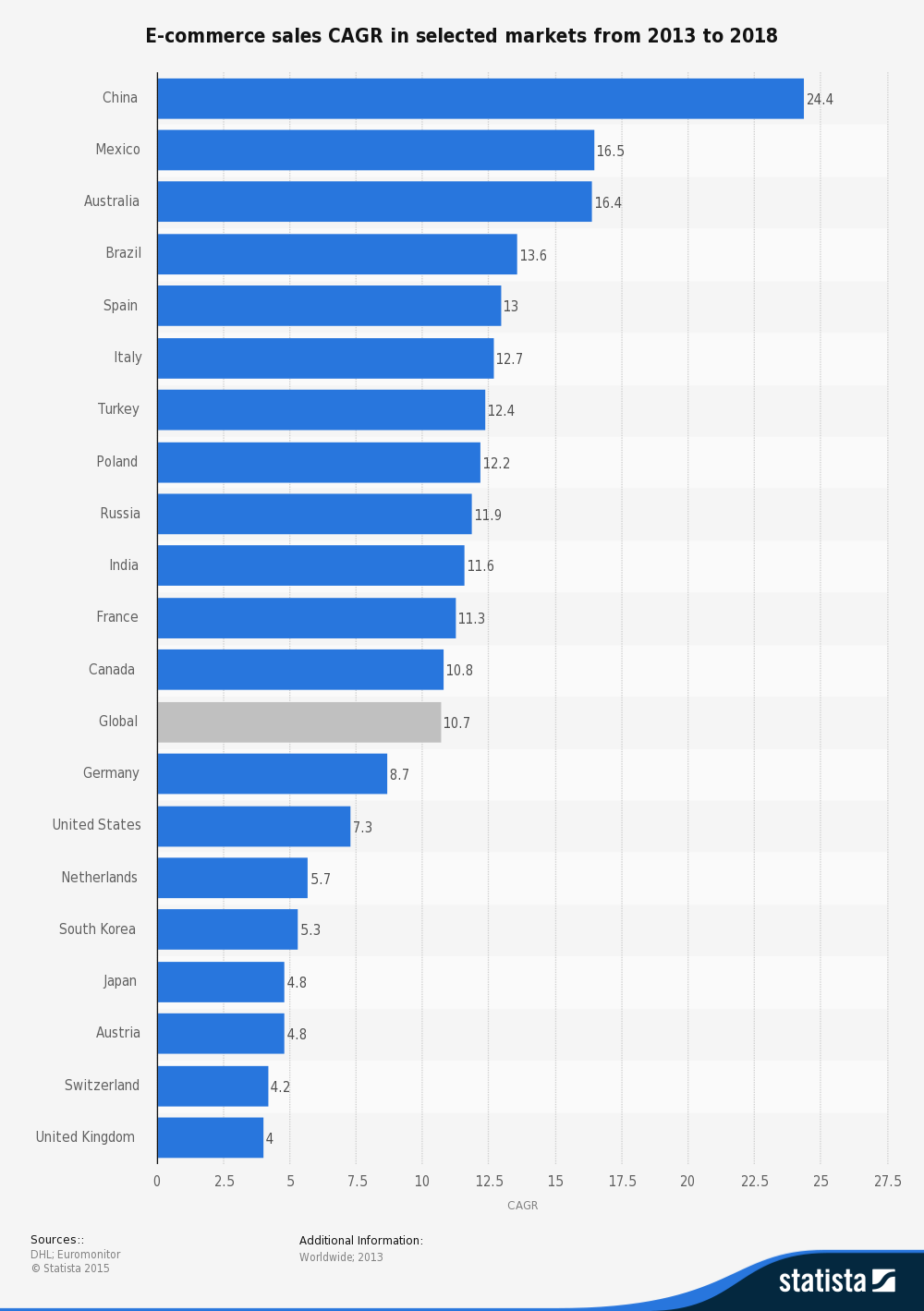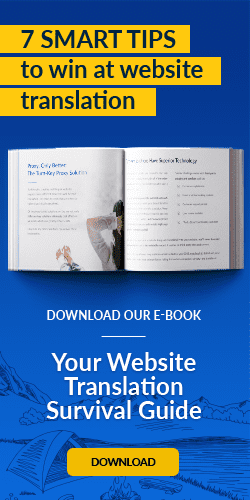Last December represented a remarkable milestone in the history of digital communication: nearly half of the world’s population is now online.
Of these nearly 3.7 billion people, almost half live in Asian countries-markets where English is a secondary or tertiary language (or not known at all). Another nearly 20% hail from Europe, another linguistically diverse region. More than 10% are also based in Latin America, where Spanish and Portuguese reigns supreme.
Indeed, as more people around the world gain access to the web, English is no longer the lingua franca of the Internet. And still, many Western companies, U.S. businesses in particular, assume global consumers are willing to read and transact on sites exclusively published in English.
This isn’t true. In fact, nearly 60% of global consumers who can read English still prefer to spend time on sites in their own language. (This rises to over 80% if the consumer has limited English fluency.) Over half of these consumers boycott English-language websites altogether, even though they’re proficient in the language.
Unsurprisingly, about 90% of consumers who can’t read English don’t transact at English-language websites at all.
International markets represent clear and compelling opportunities for companies to increase customers and revenue. What's the best way to reach these customers? Translated websites.
Companies that launch localized e-commerce and branded online experiences for global consumers stand to win millions of dollars in annual incremental revenue. We've seen it time and again with our clients.
We recently spoke with Erdem Tokmakoglu, a Global Online Strategist with our Global Growth team, on the subject. For businesses still on the fence about the value of website translation and expansion into global online markets, Erdem's data-centric insights reveal how localization-and complementary in-market best practices-can deliver more traffic, conversion and revenue than ever before.
Setting the Stage
Consider these three key considerations businesses must make when selling online goods or services to any market, Erdem says, as inspired by a recent Harvard Business Review article:
- "Online customers usually conduct a web search, in their preferred regional search engine, to find products or information to fit their needs," he says. "If your website's SEO follows best practices, the user will often find, and visit, your website."
- "Once there, how customers interact with the site's user interface makes a big impact on sales," Erdem says. "If the user enjoys the experience, the website almost always generates successful conversions."
- Finally, the third consideration is "the post-transactional experience," Erdem explains. "This represents how a consumer responds to the experience from an emotionally-driven, customer satisfaction perspective. If the site delivered or exceeded expectations, the customer will likely return."
At every step of this customer journey, success hinges on tailoring the experience for the proper audience. This is true not only for websites serving primary English-speaking markets, but for translated sites serving global customers, too.
"A commitment to a highly-relevant localized experience goes a long way to build brand awareness, generate revenue, drive leads and increase customers," Erdem says. "If international users can't find your site, or can't understand its content, or don't know where to click, they won't trust your company. They'll leave the site without any interaction."
This is where resonant, authentic translated online content plays a critical role. Billions of global customers deserve—and expect—to be engaged in their preferred languages. In fact, in many cases, serving localized content is the only viable path to global growth. E-commerce sales trends show much higher growth rates for non-English speaking countries such as China and Mexico (with 24.4% and 16.5% growth higher than the global average, respectively).
But engaging these customers requires a thoughtful approach to translation and localization, Erdem says.
“Building customer trust requires a meaningful shift in how you communicate with people in new markets,” he advises. “Companies should no longer be thinking ‘internationally.’ They should be thinking transnationally.”
Transnational Thinking
Smart companies don't view countries simply as exploitable markets for their goods. They perceive these markets as a combination of different cultures, ideas and desires that deserve a committed and concerted approach to customer engagement. That's transnational thinking, Erdem says.
Companies that double-down on authentic, brand-faithful website translations win big in new markets-often mere weeks after launching their localized websites. Let's take a look at one MotionPoint retail client that chose to serve the thriving U.S. Hispanic market with a Spanish-language website.
“This sounds absolutely crazy, but the numbers don’t lie,” Erdem says, smiling. “If we look back our data, in just 90 days after launching the Spanish site, the site’s transaction revenue increased by over 23,000%. And daily sessions leaped from 12 a day to over 25,000.”
More success stats: the Spanish site's gross annual sessions soon hit 9 million. The average time customers spent on site? An astonishing 10 minutes.
Sessions for Spanish

Transaction Revenue for Spanish

Average Session Duration for Spanish

This success is directly linked to website translation-and ensuring those translations resonated with the appropriate audience, while meticulously representing the retailer's brand, and voice. This transcends commodity translation, Erdem says. This kind of success requires the help of skilled, brand-sensitive linguists.
Spanish sites aren't the only ones that benefit from this transnational "TLC." Erdem cites the performance of an Italian site we localize and operate for another client. In 90 days, this site's daily sessions grew from 29 to 10,205. Transaction revenue increased by 7,944%.
Gross annual sessions topped out at 6.5 million. Average session duration clocked in at 10 minutes, "representative of a highly engaged and spending user base," Erdem observes.
Sessions for Italian

Transaction Revenue for Italian

Average Session Duration for Italian

In both examples, MotionPoint's clients realized the benefits of horizontal expansion. Tailoring these sites' messaging improved visitor impressions, opened them to a broader audience, and increased their transaction revenue conversions-all in less than 60 days.
Intriguing Markets and Final Thoughts
For companies curious to expand into new global online markets, Erdem provides some insights on which markets to target.
“Mexico is an especially attractive market for American companies right now,” he says.
And with good reason: last year, e-commerce transactions in the country were up 37% over 2014, revenue was up 67%, and digital buyer penetration was up 14.4%. Companies also see a “Latin American lift” when they launch Spanish-language sites; customers from Brazil, Colombia and other markets often flock to the site, and transact.
China is another strategic market to target, Erdem says. Its increasingly-affluent populace now represents more than 20% of the world's total Internet-using population. That's currently more than 360 million online shoppers, with a 25% e-commerce growth rate, representing nearly $1.5 billion in B2C e-commerce sales.
"Transnational thinking-in which companies genuinely value global customers, and engage them with authentic, resonant content-is gaining traction," Erdem says. "Don't be left out. Underestimating audiences and over-standardizing markets will reduce conversions. Global consumers expect more. Be sure to give it to them, in their languages of choice."


